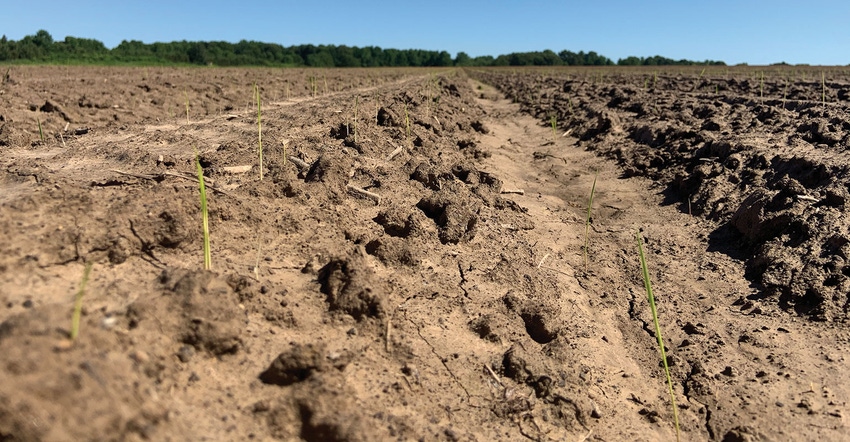June 22, 2020

Nearly half of all rice produced in the United States is grown and harvested in Arkansas, and that’s not solely based on luck. Those numbers hinge on diligent, persevering rice farmers and innovative techniques that overcome some not-so-unique challenges.
Jarrod Hardke, Extension rice agronomist for the University of Arkansas System Division of Agriculture, says the rice season is in full swing.
“Planting is 99.99 % complete, with a few fields going in this week (June 15) ahead of the rain next week. A large percentage of the crop is reaching reproductive growth stages at this point, though there is still plenty yet to go,” Hardke says.
Rain
This season has been particularly difficult for producers due to the large amounts of rain that Arkansas received during planting stages.
“The major rain events kept us completely out of sync and mostly eliminated the ability to get large planting runs completed early in the season, which made this crop similarly late to 2019. That was the slowest planting progress in 35 years,” Hardke says.
Farmers have felt a wave of stress, especially after a nearly identical planting season last year. According to the Arkansas Rice Update, a weekly newsletter produced by the University of Arkansas System Division of Agriculture, a substantial amount of rain can cause rice to be shallow rooted, which leads to a vulnerable rice crop.
Despite the hardships, rice farmers have remained dedicated. Hardke estimates that farmers planted more than 1.4 million acres of rice for the 2020 season, which surpasses the 1.1 million acres planted last year.
Furrow-irrigated
Most rice is grown in fields that are flooded, but a rising number of acres is being grown through a different process. He says approximately 200,000 acres of rice is furrow-irrigated rice, or row rice.
“Furrow-irrigated rice is the practice of irrigating rice using furrows instead of constructing levees and establishing a flood on the field,” Hardke says.
Row rice is never flooded like traditional rice; instead, it is simply irrigated frequently. This method has gained more popularity in recent years with rice farmers because of increased irrigation efficiency. It also simplifies crop rotation and management. Though FIR is an attractive option for many rice farmers, there are a few possible challenges they should be aware of.
“Without a flood, we have the potential…to encounter weed control and disease management issues, along with the possibility to lack adequate irrigation capacity in some fields,” Hardke says.
Cost-saving technique
However, hope for this new approach persists. In fact, with help from the right technology and expert advice, this could be the cost-saving technique rice farmers need.
“We will rely on good herbicides and herbicide technology programs, along with crop rotation, to keep this practice viable into the future. This practice does not have a fit on all ground where we produce rice, but it does have a sizeable home, as long as we keep some of these issues in check,” Hardke says.
Farmers still have a way to go before harvest, but with a little bit of luck and good management practices their crops should flourish. The 2020 rice season in Arkansas is shaping up to be a successful one, and row rice clearly has a spot in the future of rice.
You May Also Like




